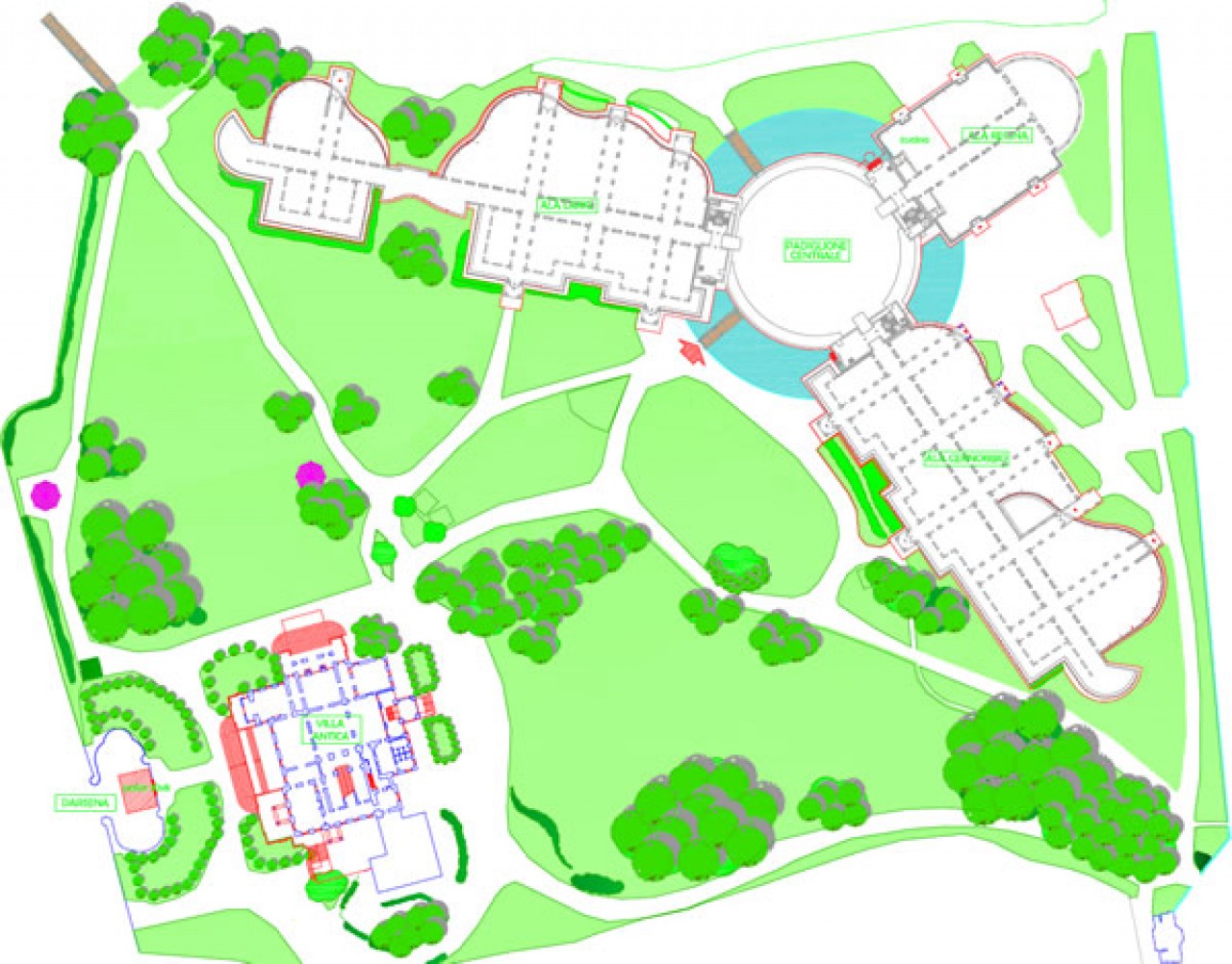In the park, the Convention Centre, designed by the architect Mario Bellini, with its glass and steel architecture, and inspired by the design of the old Larian greenhouses, creates a perfect balance between history, elegance and innovation. The building, with its over 10,000 square-meter area, consists of a circular pavilion and three different wings: Lario, Cernobbio and Regina, which can host more than 500 stands; it also features 28 meeting rooms, with a capacity of 50 to 1,500 seats.
The central pavilion structure has been designed for the hosting of large events (up to 1500 participants). Its circular structure is characterized by excellent acoustics can host not only national and international conventiones, conventions, large conferences and films, but also shows, concerts and DJ sets until late at night, upon request. The three side wings can host conference rooms, conference buffets and rooms for business negotiations.
Each wing can be used independently to meet the needs of each customer in terms of space and service. The side windows of the central pavilion can be totally opened, and allow for the display and presentation of products of considerable dimensions. All the windows can be completely dimmed for perfect video projection, presentations or special effects.

